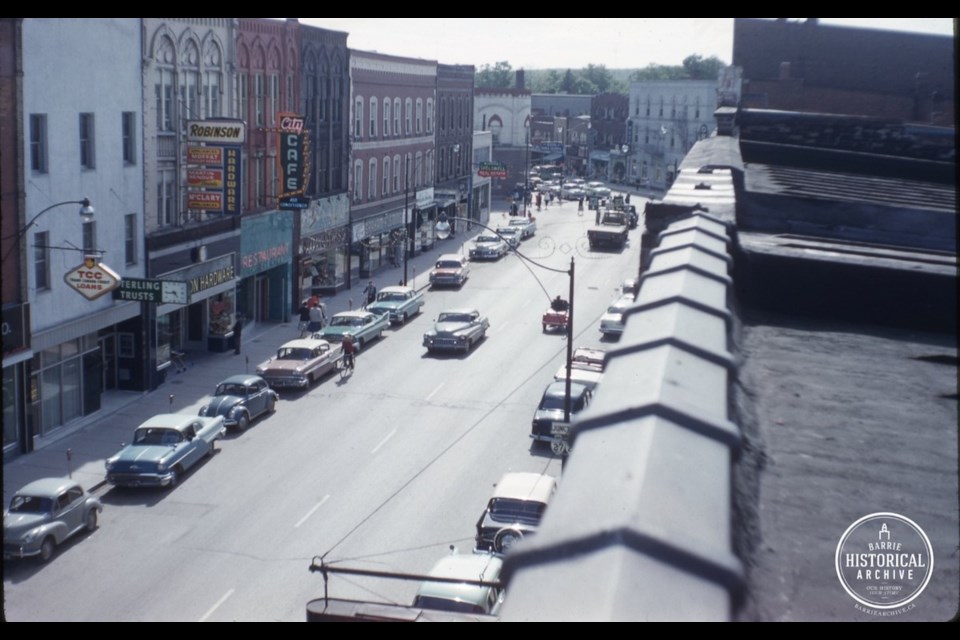On Monday, July 20, 1964, Robert Stanley Ray was found waiting at the Hamilton, Ont. bus station holding a ticket for Port Arthur, Ont. He was arrested without incident for the murder of his mother, Doris Ray, and returned to Barrie.
By July 25, the investigators had not extracted a confession from the troubled young man but had learned that the sought-after murder weapon might be found at the bottom of Little’s Hill, where Highway 400 meets Highway 27 (Essa Road) just before the steep ascent to the present-day television tower.
A metal detector was brought to the scene, and with the help of the O.P.P. and Camp Borden personnel, another search was begun. A half of an acre of sod was torn away from the cloverleaf after permission was granted by the provincial government to do so. The search became an intense dig on hands and knees as the metal detector was rendered mostly useless by buried scrap metal and wire mesh used to secure the hillside.
After five days of searching, and the discovery of more than a few unrelated knives, a knife matching the description of the one in question was found on July 30. It was immediately sent to the Attorney General’s crime lab in Toronto.
Robert Ray appeared in court for the second time the next day and had his case remanded again until the 7th of August. Meanwhile, he spent his time in the Barrie Jail on Mulcaster Street. On Sept. 22, Ray was committed to stand trial for the murder of his mother.
The youth had been sent to the Ontario Mental Hospital at Penetanguishene for evaluation in the summer and was deemed fit to stand trial. However, he suffered a mental breakdown in the Barrie Jail on Dec. 29 and was returned to the Penetanguishene facility for an extended period of time.
Finally, in 1965, Robert Stanley Ray was tried for the brutal killing of his mother. There had never been much doubt as to who was responsible for the horrific crime and the troubled young man was found guilty. His lawyer at the time, Gordon McTurk, who was defending only his second criminal case client, was pleased that Stanley was convicted of non-capitol murder as opposed to the potentially more serious capitol murder.
But the story doesn’t end there. Given his youth at the time of the crime, and the willingness of the corrections authorities to give second chances at living a productive life, Robert Ray was granted parole after serving a little more than a decade behind bars.
He moved to Belleville where his father had settled, and got work in the construction industry. In time, he married his girlfriend, Linda, and set out to rebuild his once paused life.
All of it came crashing down one day in October of 1986. The bedevilled youth was a 40-year-old man by then, but his anger problems had never left him. Robert Ray savagely beat and stabbed Linda until she was dead.
Ray received another life sentence for this second killing and may remain in prison yet.
To read part one of this series, please click here.
Each week, the Barrie Historical Archive provides BarrieToday readers with a glimpse of the city’s past. This unique column features photos and stories from years gone by and is sure to appeal to the historian in each of us.



